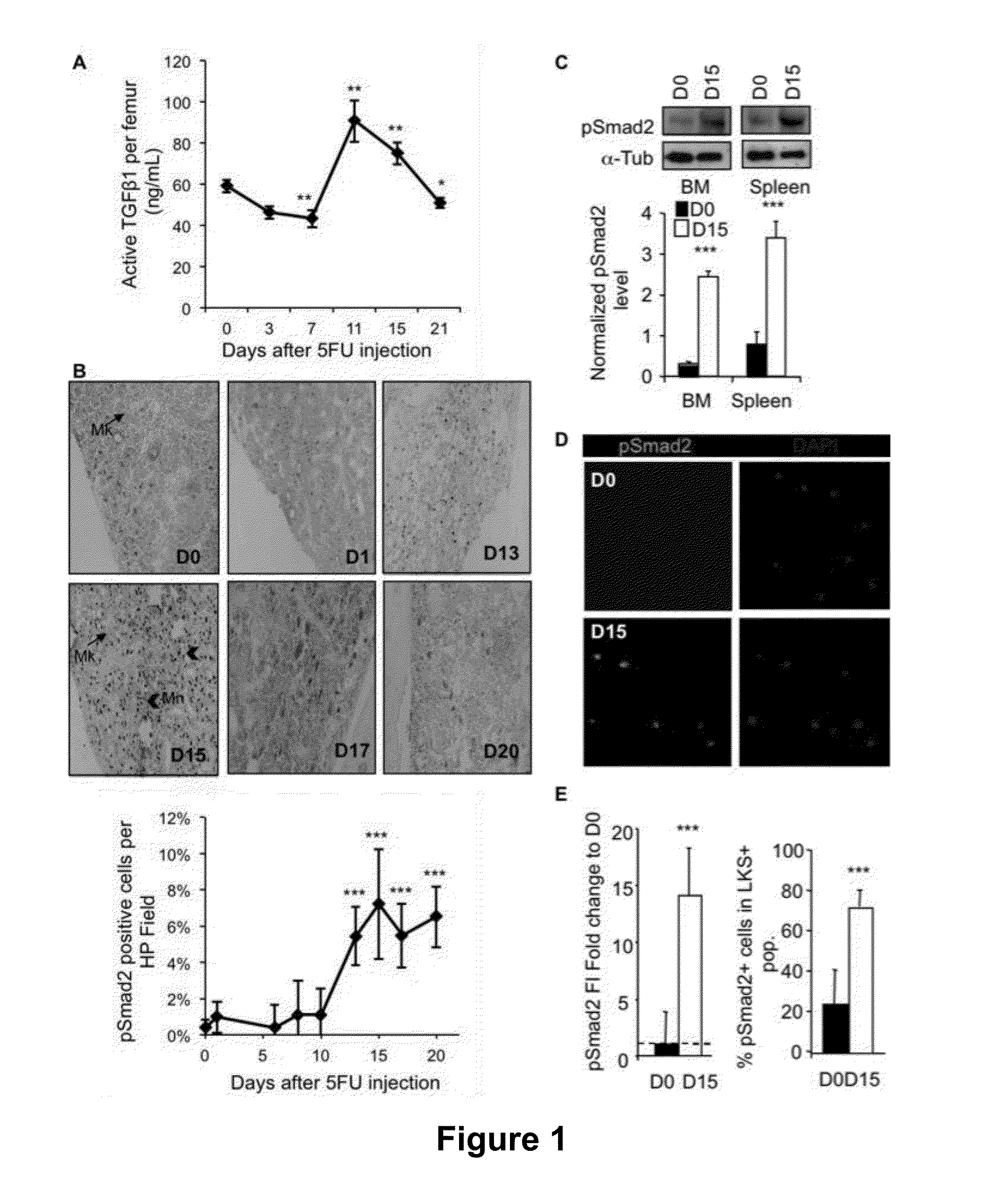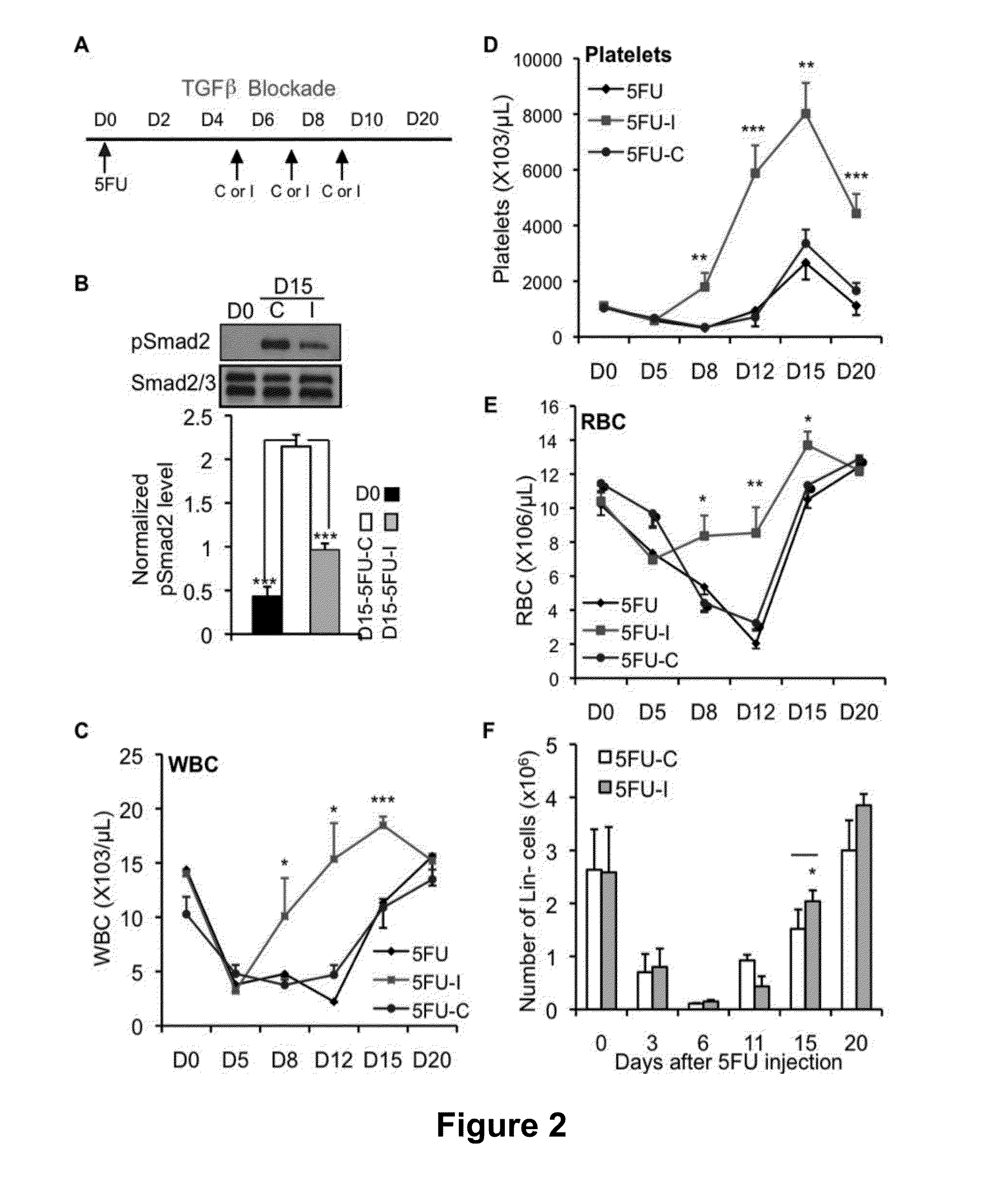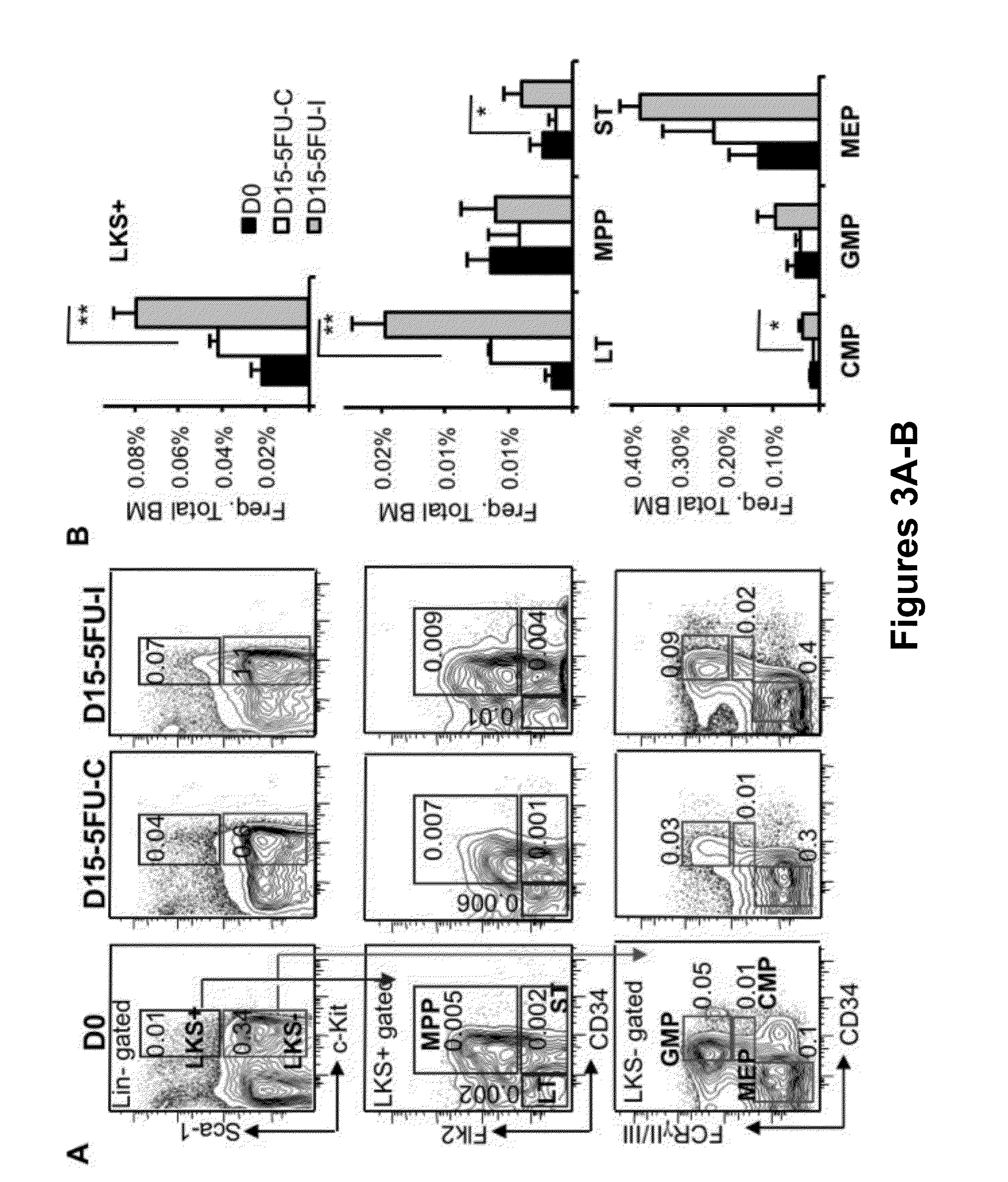Methods for stimulating hematopoietic recovery by inhibiting TGF beta signaling
a technology of hematopoietic cells and signaling, which is applied in the direction of immunoglobulins, peptides, drugs, etc., to achieve the effects of stimulating hematopoietic regeneration, accelerating hematopoietic reconstitution, and reducing the risk of hspcs cycling
- Summary
- Abstract
- Description
- Claims
- Application Information
AI Technical Summary
Benefits of technology
Problems solved by technology
Method used
Image
Examples
example-1
[0078]This Example describes materials and methods used in the following examples.
[0079]Animals
[0080]Mice with targeted disruption of the p57 gene (Zhang et al., Nature 387:151-158 (1997)) were backcrossed into C57BL / 6J (The Jackson Laboratory, Bar Harbor, Me.). Mice with homozygous deletion of p57 (i.e., p57− / − or p57-KO mice) or with a maternally-inherited p57-targeted allele (p57+ / −m) are not viable but embryos survive to at least day 20 (E20) allowing FLMCs to be harvested from viable embryos. To facilitate analysis of HSC-transplant recipient mice, the inventors crossed p57 mice with transgenic mice expressing EGFP under control of the ubiquitin C promoter (Schaefer et al., Cell Immunol 214:110-122 (2001)). Hematopoietic cells from these mice express EGFP in all blood lineages. Animals were maintained in Weill Cornell Medical College Animal Facility according to IACUC-approved protocol.
[0081]Immunophenotypic Analysis of BM HSPCs and HSCs by Flow Cytometry.
[0082]Mice were killed...
example-2
[0106]This Example describes the results from experiments conducted to investigate the role of TGFβ signaling in establishing HSPCs homeostasis following chemotherapy.
[0107]TGFβ Signaling is Activated During Hematopoietic Recovery from Myelosuppression
[0108]To study hematopoietic recovery after chemotherapy, the inventors treated mice with the antimetabolite, 5-flurouracil (5FU), and measured TGFβ1 in the bone marrow (BM) during hematopoietic regeneration (FIG. 1A). 5FU targets cycling hematopoietic cells and causes extensive bone marrow (BM) aplasia with a nadir between D6 and D8 after chemotherapy. The level of active TGFβ initially declined slightly but then rose significantly as hematopoiesis was restored 11 to 15 days after chemotherapy. The inventors monitored phosphorylation of the intracellular mediator, Smad2 (pSmad2), to report intracellular activation of the TGFβ pathway. Whereas immunohistochemical (IHC) staining for pSmad2 was weak in homeostatic BM (5FU-D0), both the i...
PUM
| Property | Measurement | Unit |
|---|---|---|
| Time | aaaaa | aaaaa |
| Time | aaaaa | aaaaa |
| Time | aaaaa | aaaaa |
Abstract
Description
Claims
Application Information
 Login to View More
Login to View More - R&D
- Intellectual Property
- Life Sciences
- Materials
- Tech Scout
- Unparalleled Data Quality
- Higher Quality Content
- 60% Fewer Hallucinations
Browse by: Latest US Patents, China's latest patents, Technical Efficacy Thesaurus, Application Domain, Technology Topic, Popular Technical Reports.
© 2025 PatSnap. All rights reserved.Legal|Privacy policy|Modern Slavery Act Transparency Statement|Sitemap|About US| Contact US: help@patsnap.com



